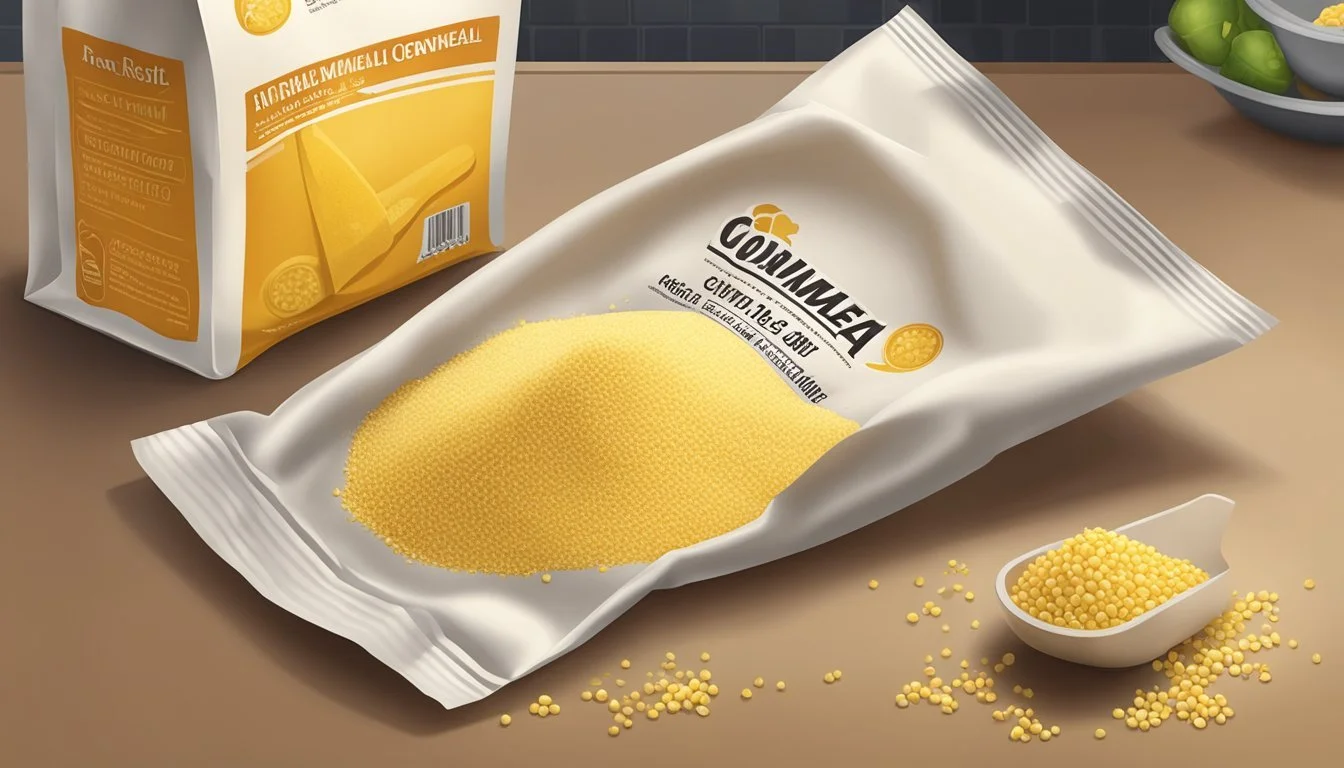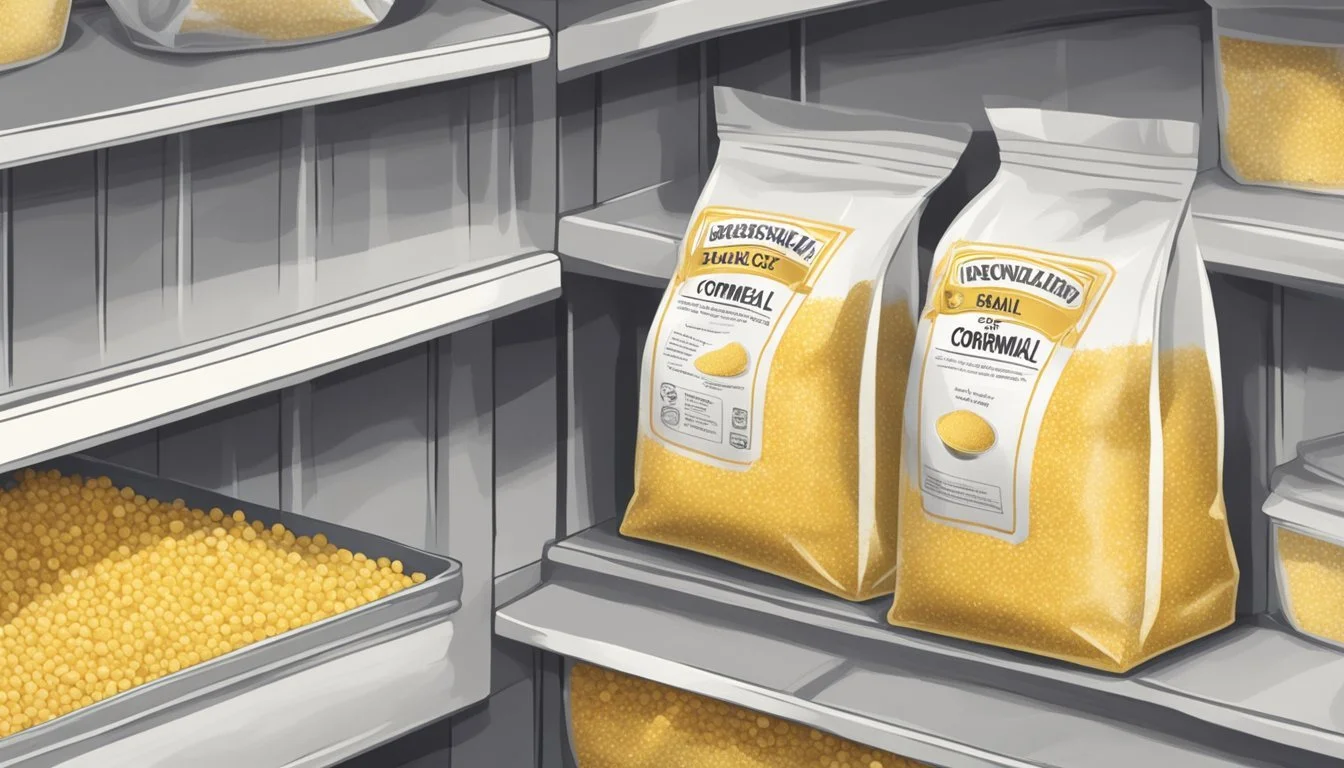Does Cornmeal Go Bad?
Shelf Life and Storage Tips
Does cornmeal go bad? This is a common question for many home cooks and bakers. Yes, cornmeal can go bad, but it doesn't happen immediately after the expiration date. The quality and shelf life of cornmeal largely depend on how it's stored.
Proper storage conditions, such as keeping it in a cool, dry place, can extend the shelf life of cornmeal to between 6 to 12 months. For those looking to store cornmeal long-term, using airtight containers and considering refrigeration or freezing can prevent spoilage by keeping insects and moisture at bay.
Signs that cornmeal has gone bad include mold, off odors, and changes in texture. Always trust your senses when evaluating cornmeal that's been stored for a long time. Discard any cornmeal that appears suspicious to ensure the safety and quality of your meals.
Understanding Cornmeal
Cornmeal plays a crucial role in various culinary traditions. It differs significantly in composition and type, affecting its usage in cooking and baking.
Composition and Types
Cornmeal is ground maize and comes in several varieties. The primary components include starch and fiber, alongside varying oil content. Types of cornmeal include:
Yellow Cornmeal: Commonly used in cornbread.
White Cornmeal: Preferred in some regional dishes.
Blue Cornmeal: Adds unique color and flavor to recipes.
The grind size also varies, from fine to coarse, influencing texture and cooking properties.
Whole-Grain vs Degerminated Cornmeal
Whole-grain cornmeal contains the entire kernel, offering more nutrients such as fiber and oils. However, it spoils faster due to fat content. Degerminated cornmeal has the germ removed, extending its shelf life but reducing nutritional value.
Whole-grain cornmeal is ideal for those seeking a nutritious, whole-food option. Degerminated varieties, easier to store, are commonly used in commercial products.
Cornmeal in Cooking and Baking
Cornmeal is versatile in the kitchen. It’s fundamental in gluten-free cooking, used in cornbread, polenta, pancakes, and as a coating for fried foods.
Cornbread: A favorite in Southern cuisine, pairing well with soups and stews.
Polenta: An Italian dish, served creamy or firm.
Pancakes: Adds texture and a mild corn flavor.
Cornmeal's role in gluten-free recipes makes it a valuable alternative for those with gluten intolerance.
Signs of Cornmeal Spoilage
It is crucial to regularly inspect cornmeal for any indicators of spoilage. Key signs include visual and textural changes, as well as olfactory indicators, which can help ensure the cornmeal is still safe to use.
Visual and Textural Changes
Discoloration is one of the primary visual signs of spoilage. Fresh cornmeal typically has a consistent yellow or white hue, depending on its variety. If the cornmeal shows dark spots or any unusual colors, bacterial growth or mold may be present, indicating it is no longer safe to consume.
Mold growth often accompanies clumping, as moisture accelerates spoilage and degradation. Cornmeal should remain loose and free-flowing; if it forms hard clumps, it might have absorbed moisture, compromising its quality.
Another indicator is a change in texture. Cornmeal should feel fine and granular. If it starts appearing coarse or gritty, it might have gone bad and should be discarded.
Olfactory Indicators
A rancid smell is a strong sign that cornmeal has spoiled. Fresh cornmeal should have a mild, sweet aroma. If it smells sour, musty, or has any off smell, it's a warning sign that the oils in the cornmeal have turned rancid.
Odor changes can be subtle at first but become more noticeable as the product deteriorates. Any smell that is not typical of fresh cornmeal should be addressed with caution and may warrant disposal.
Constantly paying attention to these olfactory indicators can prevent the use of expired or spoiled cornmeal and ensure the quality of culinary dishes.
Storing Cornmeal
Proper storage techniques can significantly extend the shelf life of cornmeal. Keeping it in optimal conditions will prevent spoilage and maintain its quality for both short-term and long-term use.
Pantry Storage
Storing cornmeal in the pantry is convenient for regular use. It should be kept in an airtight container to prevent moisture and insect contamination.
The pantry must be cool and dry to avoid the deterioration of oils within the cornmeal, which can lead to spoilage. Using airtight containers also helps in keeping out pantry pests such as weevils.
Room temperature works well for short-term storage. If you plan to use the cornmeal within 9 to 12 months, keeping it in a cool, dark pantry is sufficient.
However, whole-grain cornmeal can go rancid faster due to its higher oil content. In this case, consider storing smaller quantities in the pantry and transferring the rest to the refrigerator or freezer for extended shelf life.
Refrigerator and Freezer Options
For long-term storage, the refrigerator and freezer are the best options. Cornmeal stored in these conditions can maintain its quality for several years.
When refrigerating cornmeal, keep it in an airtight container to avoid moisture and odor absorption. Whole-grain varieties benefit significantly from refrigeration, maintaining their best flavor and freshness for about three months.
Freezing cornmeal extends its shelf life even further. Use a freezer bag or an airtight container to protect against freezer burn. Properly frozen cornmeal can last over 10 years while preserving its nutritional value and taste.
Always label containers with the storage date to keep track of its longevity. Whether choosing refrigeration or freezing, these methods ensure that your cornmeal remains fresh and ready for use whenever needed.
Extending Shelf Life
The shelf life of cornmeal can be significantly extended through proper storage techniques and the use of specific methods to preserve its quality.
Best Practices for Long-Term Storage
By storing cornmeal in air-tight containers, the risk of spoilage due to oxygen and pests is greatly reduced. Mason jars and other sealed plastic containers are ideal choices.
Keeping cornmeal away from light and heat is crucial. Mylar bags with oxygen absorbers offer an excellent solution. These bags not only block out light but also absorb remaining oxygen, effectively extending the product's freshness.
Another important factor is the storage environment. Cooler temperatures and low humidity are key. Storing cornmeal in a pantry that stays consistently cool and dry will help maintain its quality.
Alternative Storage Methods
Freezing is another effective method for extending the shelf life of cornmeal. Placing cornmeal in the freezer reduces the risk of insect infestation and prevents moisture from causing spoilage.
For best results, use food-grade buckets with airtight lids or vacuum-sealed bags to avoid freezer burn. Label containers with the date to keep track of how long they have been stored.
Refrigeration can also extend the freshness of cornmeal, though it is less effective than freezing. Store cornmeal in tightly sealed containers to prevent it from absorbing odors from other foods.
These practices ensure that cornmeal remains fresh and usable for a prolonged period.
Potential Health Concerns
Consuming cornmeal that has gone bad or been compromised can pose several health risks. It's essential to be aware of these risks to avoid potential health problems, such as foodborne illnesses and allergic reactions.
Consuming Expired Cornmeal
Expired cornmeal can lead to various health issues. Over time, cornmeal can become stale and lose its quality. The oils in the corn can turn rancid, leading to a bitter taste that is unpleasant and potentially harmful.
Signs of spoilage include discoloration, mold, or a sour smell. Consuming moldy cornmeal may cause digestive issues and allergic reactions. Rancid oils can be hazardous, causing nausea or other gastrointestinal problems.
Proper storage can extend the shelf life of cornmeal. Keeping it in an airtight container in a cool, dry place minimizes the risk of spoilage.
Pest and Insect Infestation
Cornmeal is susceptible to pest infestations, including insects, bugs, and moths. These pests can contaminate the product, making it unsafe to eat. Infestation often occurs when cornmeal is stored in humid or poorly sealed conditions.
Infested cornmeal can introduce harmful bacteria into the diet. This can lead to food poisoning or allergic reactions. Insects, such as pantry moths, can leave webs and eggs in the cornmeal, rendering it unsafe.
Regularly inspecting and maintaining storage areas can prevent these issues. Using airtight containers and keeping the storage area clean and dry are crucial steps in avoiding pest infestations.
Tips and Tricks
Proper use of cornmeal in recipes and understanding the differences between cornmeal and its substitutes can enhance your cooking experience and ensure food safety.
Cornmeal Usage in Recipes
Cornmeal is versatile in the kitchen, perfect for breading meats and vegetables or making delicious cornbread and muffins. It can be used as a thickener in soups and stews.
Bolted cornmeal contains both whole corn kernels and finer particles, while unbolted cornmeal is more coarse. For a lighter texture, use bolted varieties.
Cornmeal provides iron and niacin, making it a nutritious ingredient. When it comes to shelf life, proper storing cornmeal is key—sealed containers help maintain freshness for up to 12 months. Regularly perform a sniff test to check for off odors, indicating spoilage.
Differentiating Cornmeal from Substitutes
It’s important to recognize cornmeal in contrast with substitutes like wheat flour, coconut flour, and corn flour. Cornmeal has a distinct grainy texture and is predominant in stone-ground forms, which offer a robust flavor.
Corn flour is finer and suitable for delicate baked goods, while wheat flour provides a denser texture. Coconut flour offers a unique taste and is gluten-free but absorbs more liquid. Understanding these differences ensures that recipes are balanced and turn out as expected.
Storing cornmeal in a moisture-free environment, like the freezer, can also extend its usability. Freezing unbolted cornmeal especially helps preserve its coarse texture without spoilage.






